JAPAN
Kyoto

Kyoto
Kyoto
Kyoto means capital and is located in the central part of the island of Honshu in Japan. In ancient times it was the imperial capital of Japan, today it is the capital of Kyoto prefecture and most of the Osaka-Kobe-Kyoto metropolitan area. According to the 2011 census there are 1,473,746 inhabitants.
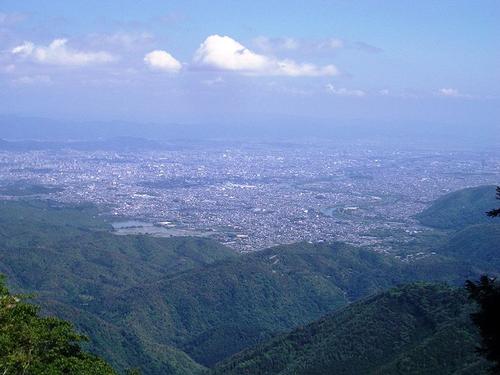 KyotoPhoto: Mass Ave 975 CC 3.0 Unported no changes made
KyotoPhoto: Mass Ave 975 CC 3.0 Unported no changes made
It is the site of the former Imperial Palace and a strategic center for business, industry, trade and transport. Kyoto is a large cultural center with numerous special historical monuments, many of them on the UNESCO World Heritage List. There are beautiful shrines, temples and cultural facilities. The city has a long tradition of major festivals and cultural events.
Location
The coordinates of Kyoto are: 35 ° 0'42 'N 135 ° 46'6' E
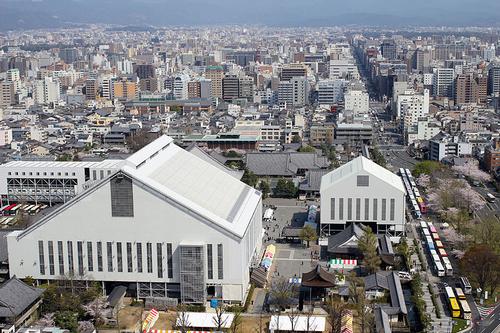 Downtown KyotoPhoto: Marc Antomattei CC 3.0 Unported no changes made
Downtown KyotoPhoto: Marc Antomattei CC 3.0 Unported no changes made
Kyoto is part of the Kansai region. The city is located in a valley, in the eastern part of the mountainous region of the Tamba highlands, surrounded on three sides by mountain ranges of Higashiyama, Kitayama and Nishiyama 1,000 meters above sea level. There are three rivers, the Ujigawa in the south, the Katsuragawa in the west, and the Kamogawa in the east. The area is rich in springs, wells, ponds and other water sources. The metropolitan area consists of 827.90 km ², the city of Kyoto itself accounts for 17.9%. The original city map is arranged according to traditional Chinese Feng Shui and from the map of the old Chinese capital Chang'an, present-day Xi'an.
Weather
Kyoto has a humid subtropical climate, characterized by hot, humid summers and cool winters due to the location of the hinterland. Snowfall occurs in the northern parts in winter, the southern parts suffer a lot from flooding. Dams have been placed to prevent damage from flooding. The fluctuations in day and night temperature can be significant in both summer and winter.
History
Kunikyio and Nagaokakyo settlements existed before the place developed into the capital of Japan and became the residence of the Japanese emperor. Kyoto was the capital of Japan for more than 1,000 years, until the emperor moved to Tokyo. From the end of the Nara period (794), Kyoto was important in Japanese history.
Religious art reached its peak in this unique city. Numerous religious Shinto rituals and festivals capture the imagination of people from all over the world. The Gion Matsuri Festival carefully maintains ancient traditions.
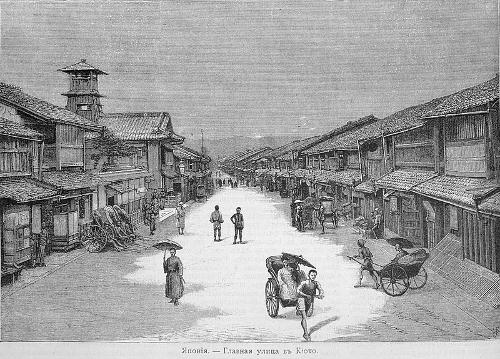 Kyoto main street in 1891Photo: Public domain
Kyoto main street in 1891Photo: Public domain
Though ravaged by wars, fires, and earthquakes during its eleven centuries as an imperial capital, Kyoto was largely spared the devastation of World War II. Today, Kyoto is Japan's main cultural center, attracting many Japanese and foreign tourists. The ancient capital of Kyoto with its fascinating historical monuments, in particular temples and shrines, continues to attract millions of visitors from around the world. The city also has modern technology industry and also produces semiconductors and LCD screens. Traditional skills developed over 1,000 years ago in this ancient capital are now used in advanced technologies.
Kyoto is now best known as the namesake of the Kyoto treaty. In this treaty steps have been taken to achieve the reduction of greenhouse gas emissions worldwide.
Sights
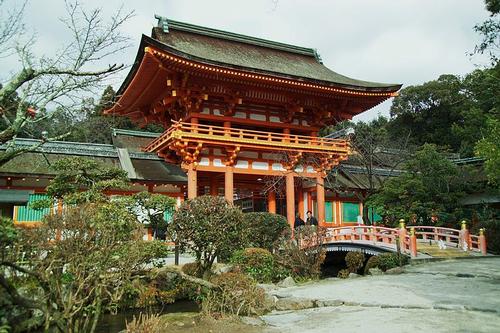 Kamigamo Jinja KyotoPhoto: Public domain
Kamigamo Jinja KyotoPhoto: Public domain
There are so many ancient historical monuments and sites that it is impossible to list them all. The city of Kyoto is a true capital of Japanese culture. There are 17 remarkable monuments, which are on the UNESCO World Heritage List, each representing a historical era. The following historical monuments of Ancient Kyoto have been placed on the UNESCO list of World Heritage: Kamigamo - jinja Shrine (Kamowakeikazuchi - jinja Shrine), Shimogamo - jinja Shrine (Kamomioya - jinja Shrine), To - ji Temple (Kyo-o -Gokoku - ji Temple), Kiyomizu - dera Temple, Enryaku - ji Temple, Daigo - ji Temple, Ninna - ji Temple, Byodo - in Temple, Ujigami - jinja Shrine, Kozan - ji Temple, Koke - dera Temple (Saiho - ji Temple), Tenryu - ji Temple, Kinkaku - ji Temple (Rokuon - ji), Ginkaku - ji Temple (Jisho - ji), Ryoan - ji Temple, Hongwan - ji Temple, Nijo - jo Castle.
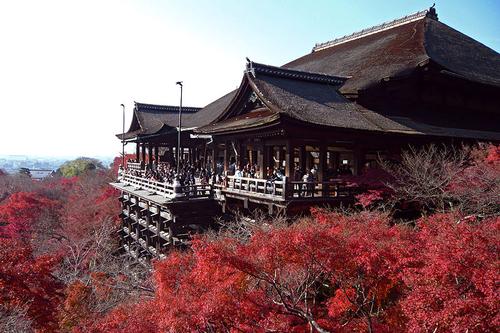 Kiyomuzudera KyotoPhoto: Oilstreet CC 3.0 Unported no changes made
Kiyomuzudera KyotoPhoto: Oilstreet CC 3.0 Unported no changes made
One of Kyoto's most famous temples is Kiyomizu-dera. This is a beautiful wooden temple supported by pillars on the slope of a mountain. The temple is also known as the temple of pure water. Kiyomizudera was built in the year 798 and Japanese visiting the Shinto shrine in the temple are considered to be successful in finding a suitable mate. The temple is therefore popular among young Japanese girls. The view from the terrace is another reason for tourists to visit this temple.
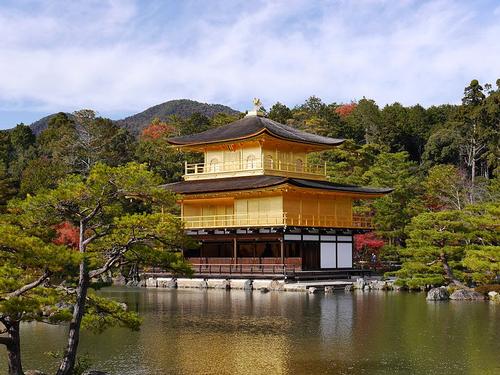 Kyoto Golden PavilionPhoto: Jaycangel CC 3.0 Unported no chnges made
Kyoto Golden PavilionPhoto: Jaycangel CC 3.0 Unported no chnges made
Kinkaku-ji is better known to foreigners as the Golden Pavilion. This unique gold-painted complex and garden are among the most photographed sights in Kyoto. The pavilion has three floors, the second and third floors are covered with gold leaf. The pond, which borders the Kinkakuji, shows a clear reflection of the building when the weather permits.
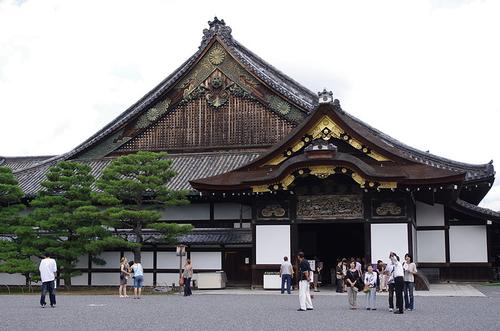 Nijo Castle KyotoPhoto: Jakun Halun CC 4.0 International no changes made
Nijo Castle KyotoPhoto: Jakun Halun CC 4.0 International no changes made
One of Kyoto's most visited historical sites is Nijo Castle. It used to be the power base of Shogun Tokugawa Ieyasu in the early 17th century. In contrast to the austere buildings of the imperial family, the castle displays wealth and power in a rather ostentatious way. Nijo Castle was quickly rebuilt to its former glory after a fire in 1788. Students from the Kano school painted wild animals in the interior, such as tigers and leopards to symbolize strength.
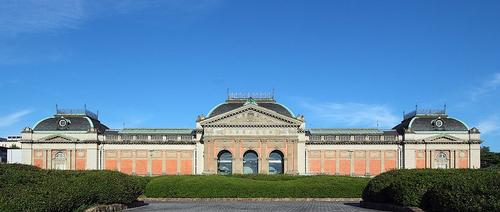 Kyoto National MuseumPhoto: Wiiii CC 3.0 Unported no changes made
Kyoto National MuseumPhoto: Wiiii CC 3.0 Unported no changes made
The Kyoto National Museum is full of historical relics and artifacts. The museum dates back to 1897 and is housed in two buildings near the Sanjusangen-do. It is a major attraction and known for its cultural exhibits on ancient crafts, archaeological finds, ceramics, sculptures, textiles, calligraphy, fine arts, lacquerware and much more. 200 items have been officially designated as national heritage.
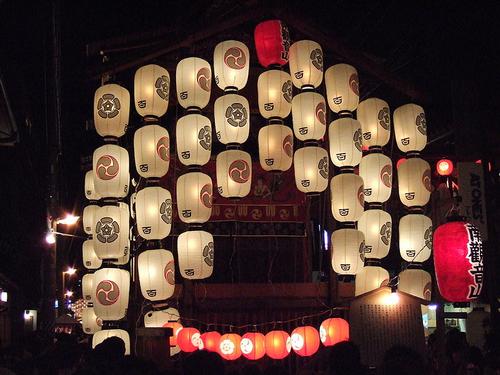 Gion Matsuri Festival KyotoPhoto: Sakurai Midori CC 2.1 Japan no changes made
Gion Matsuri Festival KyotoPhoto: Sakurai Midori CC 2.1 Japan no changes made
Kyoto is known for its traditional festivals and cultural events, some of them over 1000 years old and now among the top tourist attractions. The most famous are: Gion Matsuri, Daimonji Gozan Fire Festival, Jidai Matsuri (Festival of the Ages), Katsuragawa Boat Festival, Fujinomori - Jinja Shrine Equestrian Festival.
Tips
Visit a traditional Japanese tea ceremony during your visit to Kyoto. The tea that is drunk in the Japanese tea ceremony is always green tea in powder form. For this, fresh, still green tea leaves are dried, roasted and stored in a wooden lacquer box Natsume. The powder is measured with a Chashaku, after which the holder is passed on to each participant of the ceremony.
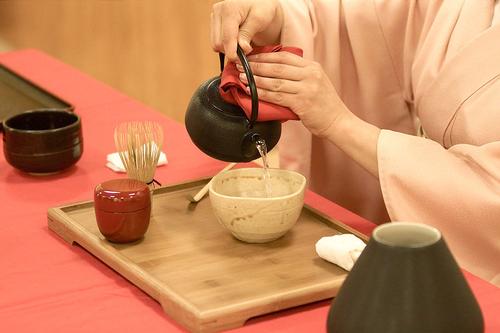 Tea ceremony KyotoPhoto: Georges Seguin CC 3.0 Unported no changes made
Tea ceremony KyotoPhoto: Georges Seguin CC 3.0 Unported no changes made
Gion is the Geisha's neighborhood in Kyoto and one of the true highlights and tourist attractions of the city. The district has narrow cobbled streets and traditional wooden buildings. It is the place where you are most likely to catch a glimpse of one nicely dressed beauties with the white faces.
Useful links Kyoto
BBC Country ProfilesWorld Fact Book Explore all Countries
How to call
Last updated November 2025
Copyright: Team - The World of Info